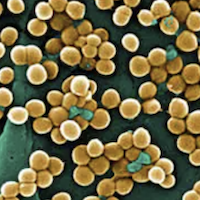Antimicrobial and anti-biofilm activity of manuka essential oil against Listeria monocytogenes and Staphylococcus aureus of food origin

Accepted: 14 January 2022
HTML: 32
All claims expressed in this article are solely those of the authors and do not necessarily represent those of their affiliated organizations, or those of the publisher, the editors and the reviewers. Any product that may be evaluated in this article or claim that may be made by its manufacturer is not guaranteed or endorsed by the publisher.
The activity of manuka (Leptospermum scoparium) essential oil (EO) on biofilms of foodborne Listeria monocytogenes and Staphylococcus aureus has been studied. Seven strains of L. monocytogenes and 7 of S. aureus (5 methicillin-resistant) were tested. EO minimal inhibitory concentration (MIC), EO minimal bactericidal concentration (MBC) and biofilm production quantification were determined for each strain by microtiter methods. Moreover, EO Minimum Biofilm Inhibitory Concentration (MBIC) and Minimum Biofilm Eradicating Concentration (MBEC) were determined on 2 L. monocytogenes and 3 S. aureus that showed the best biofilm production. Finally, on 4 strains out of 5 (2 L. monocytogenes and 2 S. aureus) EO Biofilm Reduction Percentage (BRP) vs. untreated controls was assessed after a treatment with EO subinhibitory concentrations. The chemical composition of manuka essential oil was determined by Gas Chromatography- Electron Impact Mass Spectrometry (GCEIMS). The manuka EO demonstrated good antimicrobial activity: L. monocytogenes MIC and MBC were 0.466 mg/ml and 0.933 mg/ml, respectively, whereas S. aureus MIC and MBC were 0.233 mg/ml and 0.466 mg/ml, respectively. Furthermore, L. monocytogenes showed a MBIC of 0.933 mg/ml and a MBEC in the range of 0.933–1.865 mg/ml, whereas S. aureus had a MBIC in the range of 7.461–14.922 mg/ml and a MBEC of 14.922 mg/ml. L. monocytogenes revealed no significant BRP after the treatment with manuka EO, whereas S. aureus showed a BRP higher than 50% with MIC/2 and MIC/4 EO concentrations. These results provide information for feasible manuka EO applications in food production systems.
PAGEPress has chosen to apply the Creative Commons Attribution NonCommercial 4.0 International License (CC BY-NC 4.0) to all manuscripts to be published.


 https://doi.org/10.4081/ijfs.2022.10039
https://doi.org/10.4081/ijfs.2022.10039



